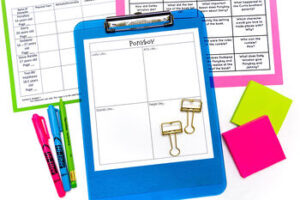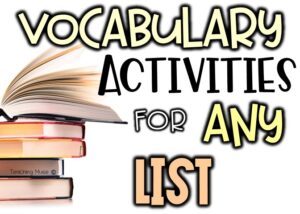Are you looking for engaging ways to help your students review important concepts without spending hours preparing? Look no further! We’ll explore creative and enjoyable review methods that require minimal preparation while maximizing learning. Whether you’re gearing up for a quiz, test or simply reinforcing key ideas, these strategies will create excitement in your classroom while ensuring meaningful review. Let’s dive into these effective and low-prep activities your students will enjoy!
6 Easy Ways to Review in Your Classroom
1. Attack - Team Review Game
Break your class into teams, the more teams, the longer the game. Each team chooses an artist to draw a castle on the whiteboard.
To save time, you can have printouts of castles for teams to use.
When students get answers correct, they put an x on an opposing team’s castle.
3 Xs, and they’re out.
The last castle standing wins.
2. Review Race - Kinesthetic Review Game
How to play this classroom review game:
- Push all desks to the sides of the room.
- Split the kids in half and line chairs up in two rows facing each other and leaving an aisle in the middle for the “raceway.”
- At one end of the chairs is either the whiteboard or a chart paper for students to write answers on. Ask a question, and the kids on the far end of the row have to run up and write/draw/circle/whatever the answer to a review question.
- The players all shift down one seat, and new players are up.
Game rules:
- Students can’t leave their seats until the question is finished being asked.
- Only the person whose turn it is can stand up.
- The team can help give them answers as they race to write (but don’t yell it out, or the other team usually gets your answer).
- No pushing or tripping players.
- Answers are checked when you put your pencil/marker down.
- The first team with the marker down and the correct answer gets a point.
This is a really fun game because of the movement that is involved, but you need to be sure that students are following the game rules and classroom management skills.
3. Reuse Old Board Games
Get simple games like
Create cards with review questions. Students have to correctly answer a question in order to take their turn.
4. Class Feud Review Game
Split the class into 2 teams or families.
One person from each family faces off at the front of the room.
Use a tall chair or stool as the “buzzer.” The first hand down gets to answer the review question read by the teacher.
If they miss, the other person has the chance to steal. If the student misses, the family of the first player gets a chance to steal. The family gets to use their notes and books., etc.
This is another review game that gets kids up and moving. I also like that it allows the students to refer back to their notes, which is an important skill in reviewing information and studying.
5. Jeopardy Class Review Game
6. BINGO Class Review Game
Print out blank bingo boards and have students create a bingo board using the names of classmates.
This is a clever review game as students do not know the order that you will choose students in order for them to win the game.
When that person answers a question, their name gets covered. Everyone has to be used once. Winners get a prize and play again.
Extend the review game by using other variations of BINGO, such as creating the letter T or the outside border.
Remember that review games can be both enjoyable and effective. By incorporating these fun, low-prep review activities into your teaching toolkit, you’re offering your students a chance to reinforce their understanding in a dynamic way. Keep in mind your students’ diverse needs and preferences as you choose activities, and don’t hesitate to get creative with variations. With these engaging strategies, you’re fostering a love for learning and helping your students succeed.






